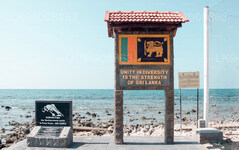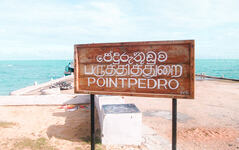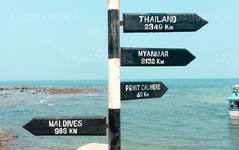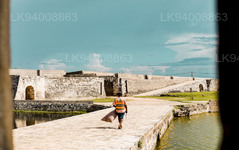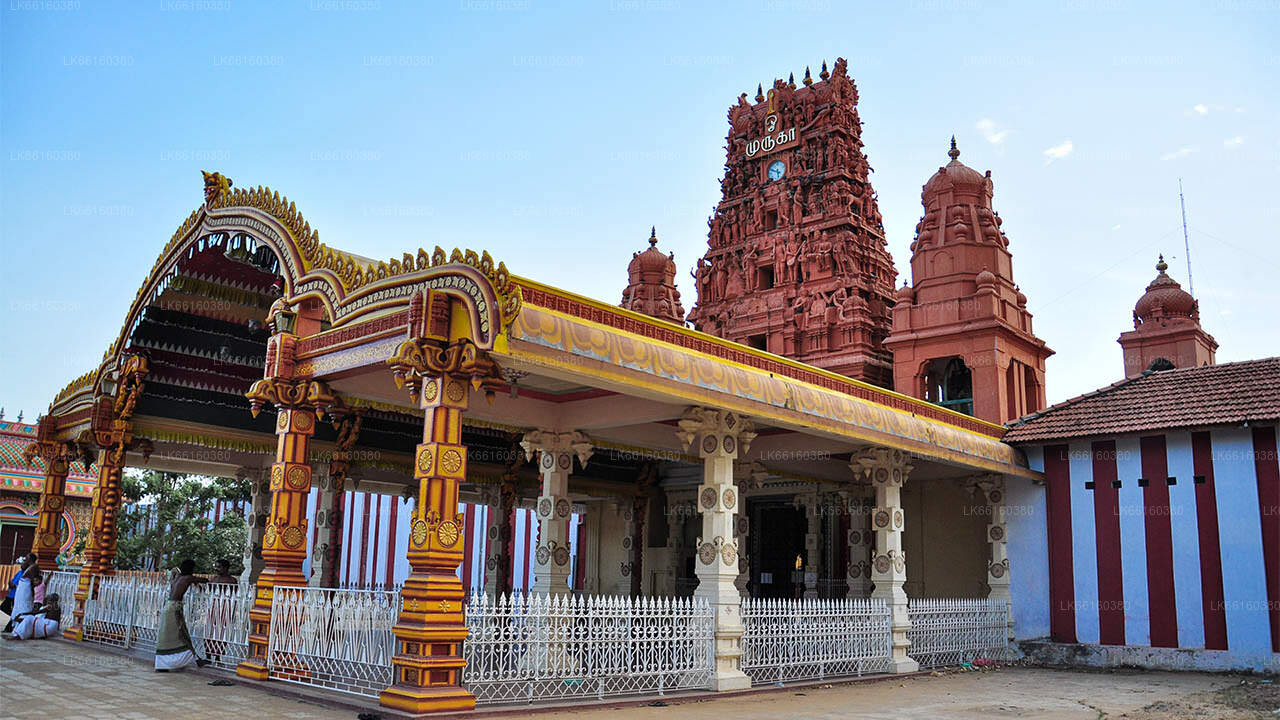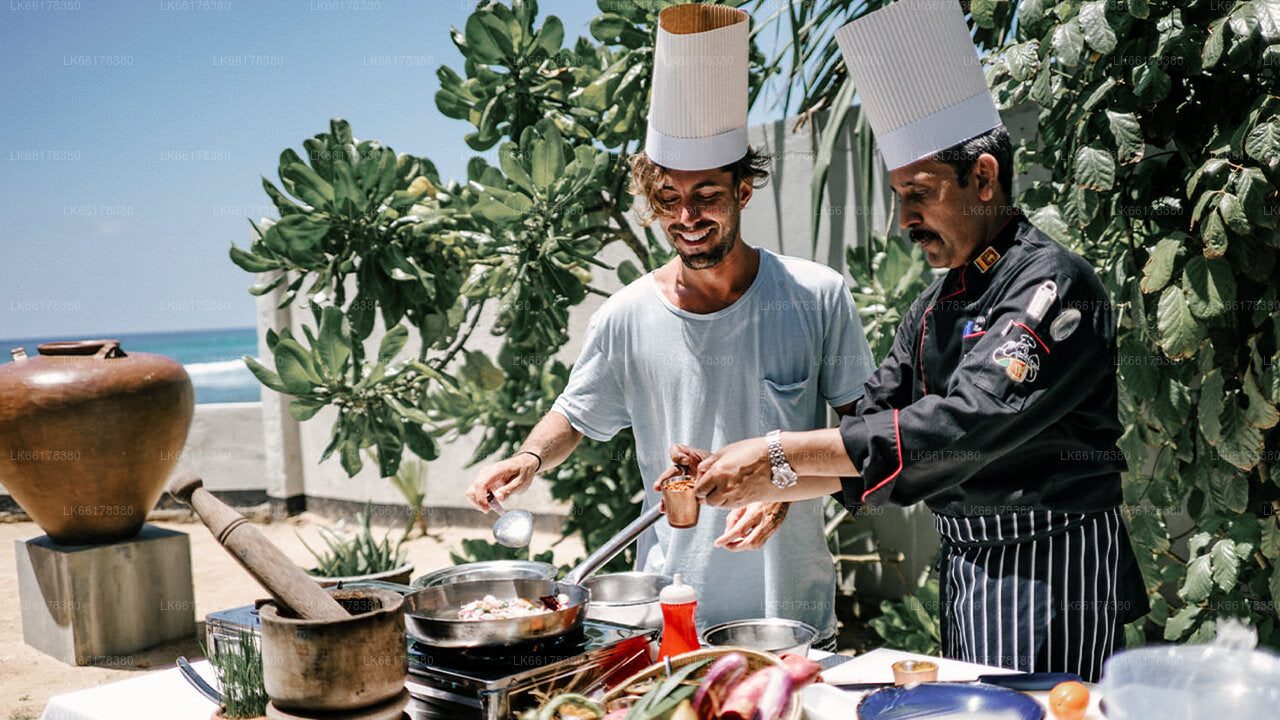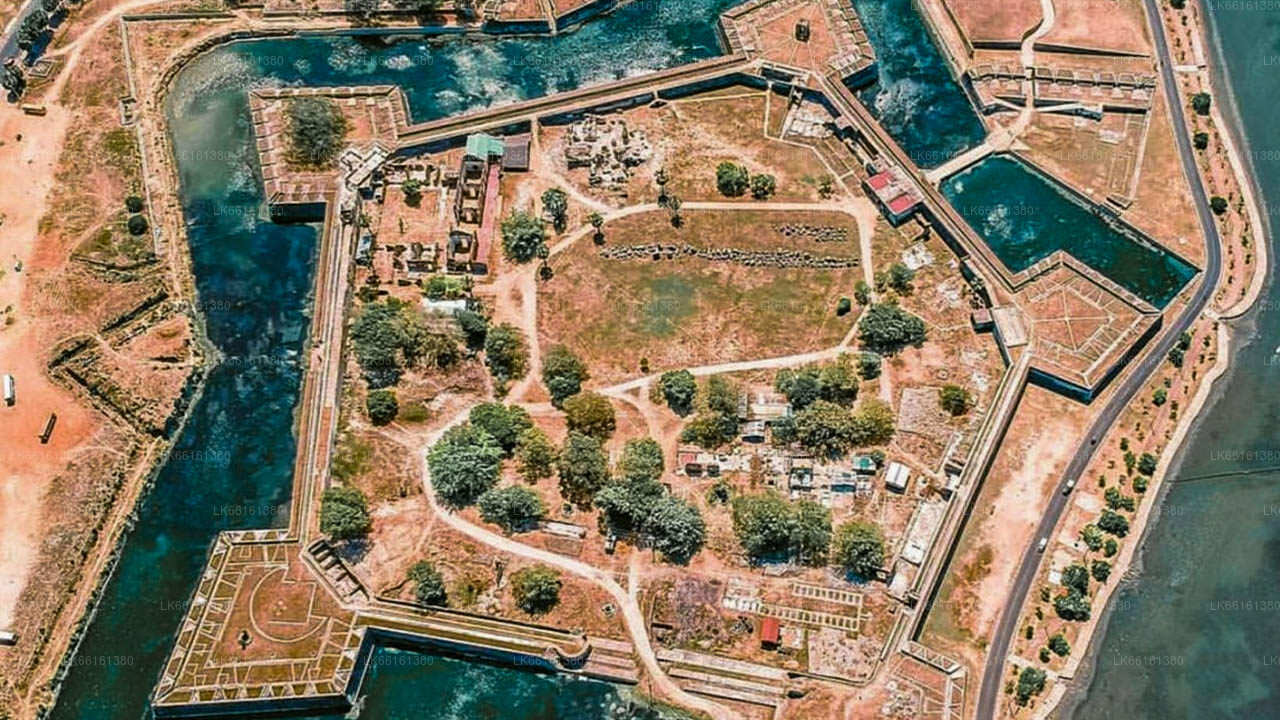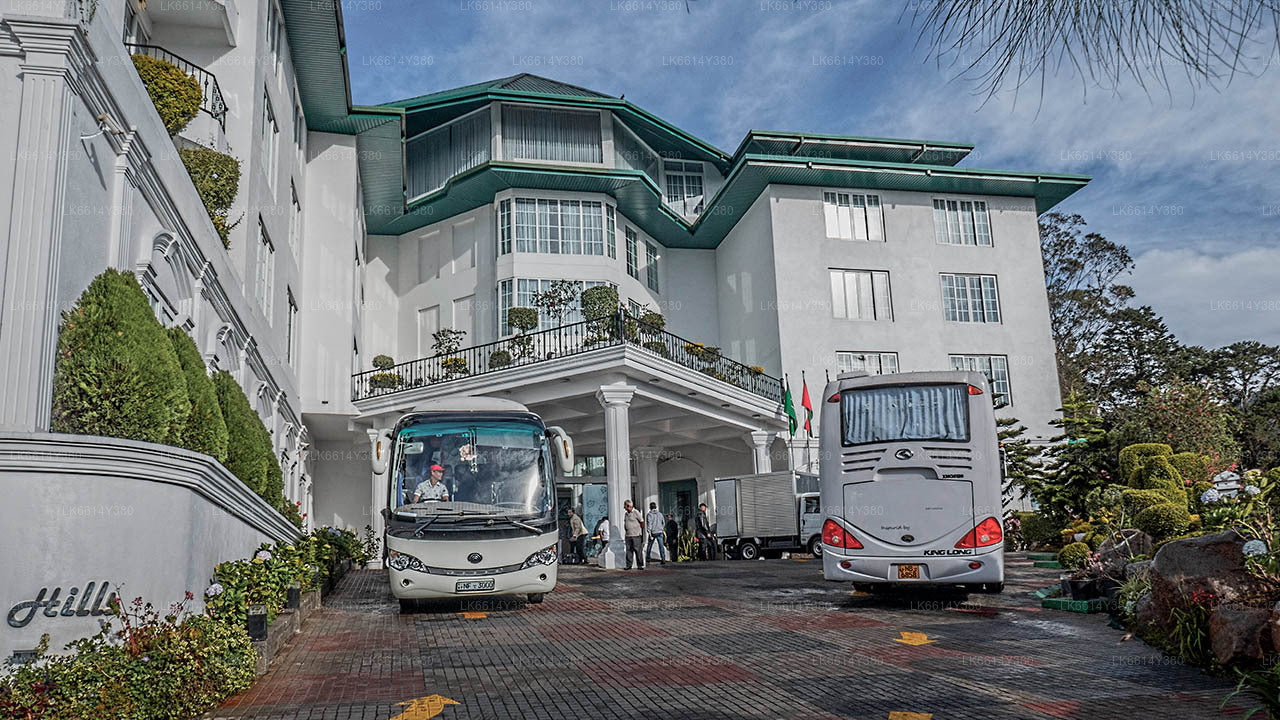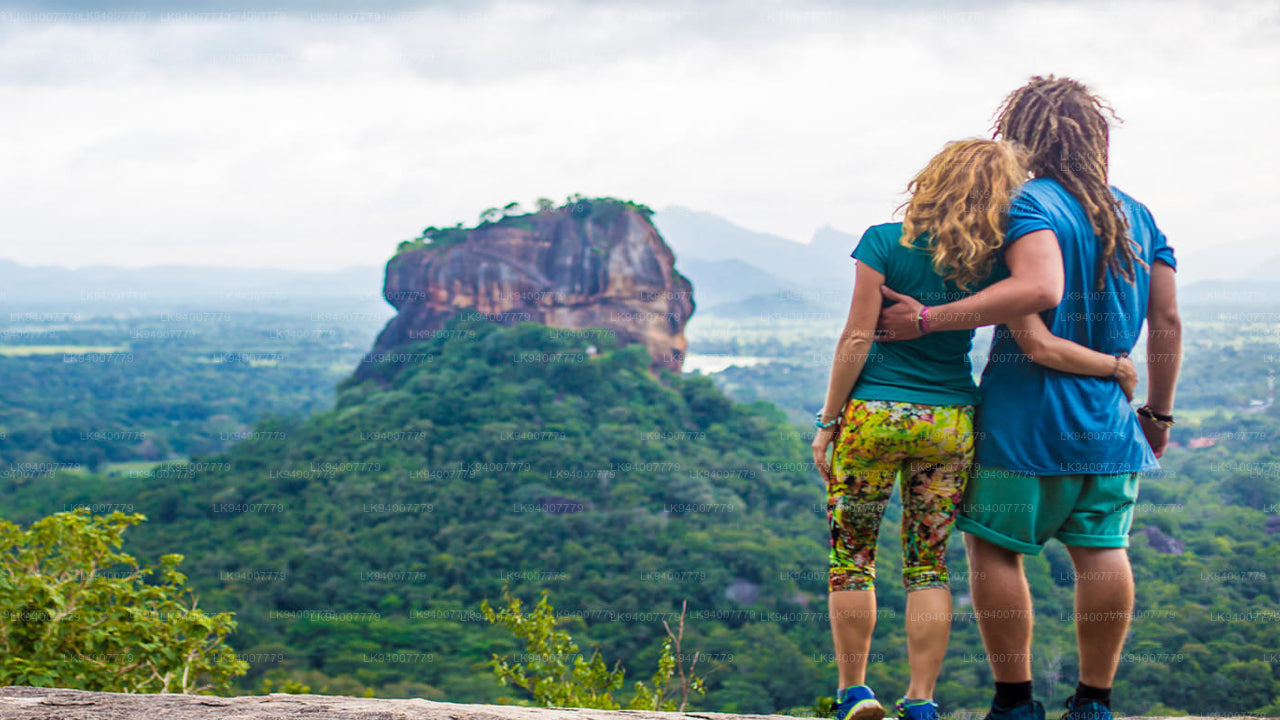
Jaffna City
Jaffna is the main city of Jaffna peninsula in the northernmost district of Sri Lanka. Comfortable intercity busses from Colombo take 10-12 hours to reach the city of Jaffna.
Punkt Pedro
Point Pedro ist eine Stadt im Distrikt Jaffna , Sri Lanka, am nördlichsten Punkt der Insel. In den fruchtbaren, kalkhaltigen, roten Latosolböden rund um Point Pedro wird Baumwolle angebaut. Die Ostküste von Point Pedro bildet einen 5 km breiten und 32 km langen Strand mit bis zu 30 m hohen Sanddünen, der sich bis nach Thalayady erstreckt. Anfang der 1990er Jahre geriet die Stadt kurzzeitig unter die Kontrolle der Tamil Tigers (LTTE), bis sie 1995 von der sri-lankischen Armee zurückerobert wurde.
Etymologie
Der Ortsname Point Pedro ist eine Verballhornung des portugiesischen Wortes „Ponta das Pedras“, was „felsiges Kap“ bedeutet. Der tamilische Name der Stadt lautet Paruthithurai, was wörtlich „Baumwollhafen“ bedeutet. Der Hafen exportierte jahrhundertelang Baumwolle nach Südindien.
Geschichte
Vallipuram, ein nahegelegenes Dorf , war eine antike Siedlung mit reichen archäologischen Überresten. In der vorkolonialen und kolonialen Zeit war Point Pedro ein Handelshafen. Viele Menschen in und um Point Pedro gehen auf lokale Händler zurück, die Sambangarar genannt werden. „சம்பாங்காரர்“ bedeutet auf Tamil „Schiffsleute“.
Portugiesische Geschichte: Rund um Point Pedro entlang der Küste und in Nelliady gibt es mehrere katholische Kirchen. Das Sacred Heart College ist eine große katholische High School in Nelliady.
Niederländische Kolonialgeschichte Im 17. Jahrhundert ließ sich Philippus Baldaeus, ein christlicher Missionar aus den Niederlanden, nach der niederländischen Besetzung Ceylons in Jaffna nieder. Er dokumentierte das Leben und die Bräuche der Tamilen in Nordceylon. Seine Studien wurden in den Niederlanden und später in Deutschland veröffentlicht. Auf dem Markt von Point Pedro erinnert eine Steininschrift an Baldaeus, der unter einem Tamarindenbaum Bibelvorlesungen hielt. Der Baum wurde 1962 von einem Zyklon entwurzelt.
Wesleyanische Missionare aus Großbritannien gründeten in der Gegend Schulen, darunter das Hartley College und die Methodist Girls High School. In Uduppiddy und Thunnalai gibt es amerikanische Missionsschulen .
About Jaffna District
Jaffna is the capital city of the Northern Province, Sri Lanka. 85% of the populations of the Jaffna and Kilinochchi districts are Hindus. The Hindus follow the Saivite tradition. The remainders are largely Roman Catholics or Protestants, some of whom are descendants of colonial settlers, known as Burghers. The Tamils are divided along caste lines, with the farmer-caste Vellalar forming the majority. Sea products, red onion, and tobacco are the main products in Jaffna.
Jaffna is home to beautiful Hindu temples. An Old Dutch Fort still stands well preserved within which is an old Church. Another example of Dutch architecture is the King's House. No visit to Jaffna is complete without tasting the exquisite Jaffna mango, reputed for its sweetness. About 3 km away is the majestic Nallur Kandaswamy Temple, home to the largest religious festival in Jaffna. The Kayts Harbour is an ancient ship docking site in the Jaffna region.
About Northern Province
The Northern Province is one of the 9 provinces of Sri Lanka. The provinces have existed since the 19th century but they didn't have any legal status until 1987 when the 13th Amendment to the 1978 Constitution of Sri Lanka established provincial councils. Between 1988 and 2006 the province was temporarily merged with the Eastern Province to form the North-East Province. The capital of the province is Jaffna.
Northern Province is located in the north of Sri Lanka and is just 22 miles (35 km) from India. The province is surrounded by the Gulf of Mannar and Palk Bay to the west, Palk Strait to the north, the Bay of Bengal to the east and the Eastern, North Central and North Western provinces to the south.The province has a number of lagoons, the largest being Jaffna Lagoon, Nanthi Kadal, Chundikkulam Lagoon, Vadamarachchi Lagoon, Uppu Aru Lagoon, Kokkilai lagoon, Nai Aru Lagoon and Chalai Lagoon.Most of the islands around Sri Lanka are to be found to the west of the Northern Province. The largest islands are: Kayts, Neduntivu, Karaitivu, Pungudutivu and Mandativu.
The Northern Province's population was 1,311,776 in 2007. The majority of the populations are Sri Lankan Tamils, with a minority Sri Lankan Moor and Sinhalese population. Sri Lankan Tamil is the major language spoken in the province by the vast majority of the population. The other language spoken is Sinhala by 1 percent of the population. English is widely spoken and understood in the cities.

